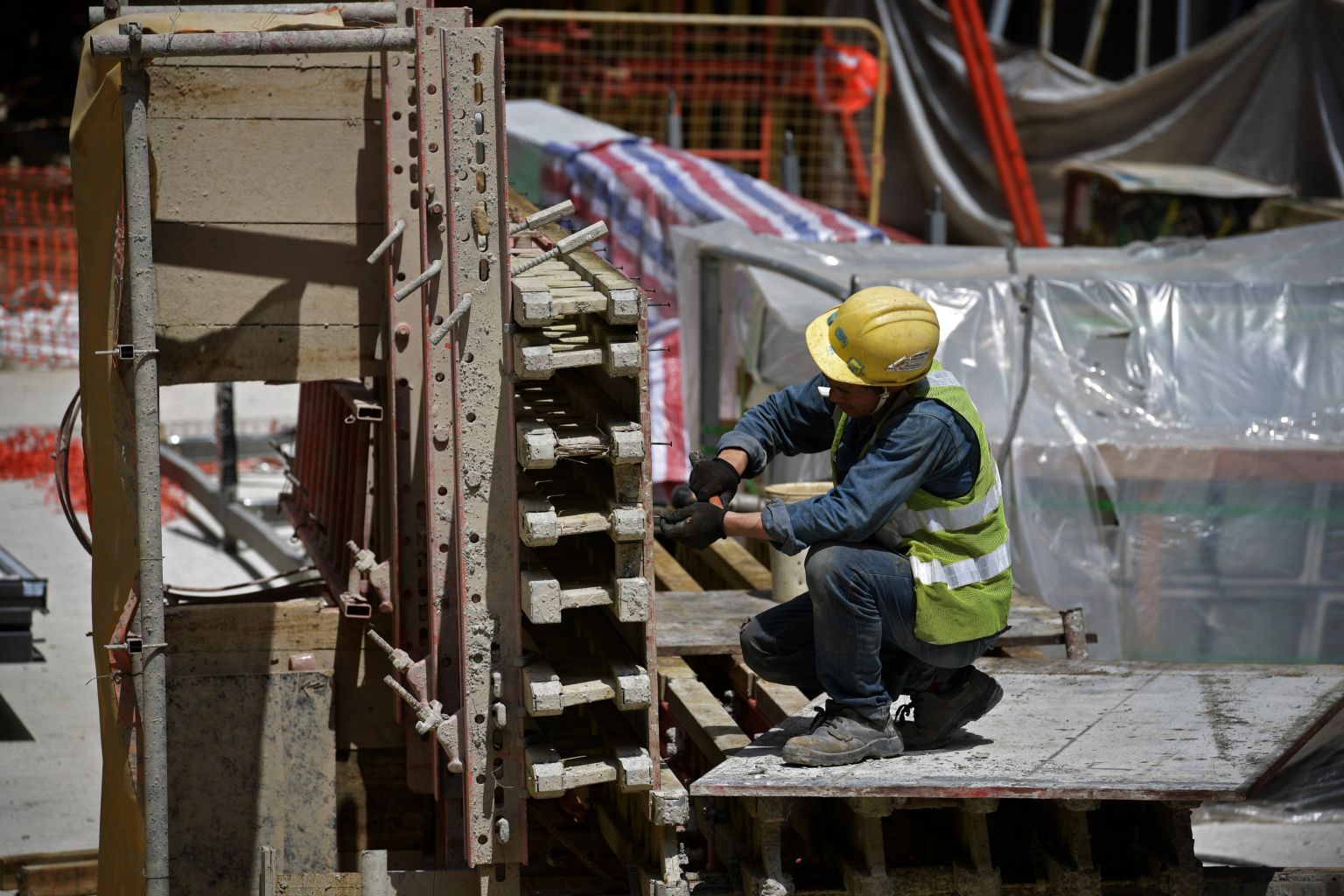More deaths, fewer injuries in construction from Jan to Nov
Industry vows to boost safety efforts; across all sectors, workplace fatalities for Jan-Nov stay at 36 for 2017, 2018
Sign up now: Get ST's newsletters delivered to your inbox

There were 12 deaths in the construction industry for the whole of last year, down from 24 in 2016.
PHOTO: ST FILE
Follow topic:
The construction sector has promised that there will be "no let-up" in its efforts to promote safety after new figures showed an increase in deaths due to workplace accidents this year.
A Ministry of Manpower (MOM) spokesman told The Straits Times that there were 13 workplace fatalities in the construction sector from January to last month, up from 10 in the same period last year.
But the number of less serious injuries fell during those months.
Workplace injuries in the sector - both fatal and non-fatal - went down to 1,648 during those months this year, from 1,751 last year.
Across all sectors, the number of workplace deaths from January to November stayed the same for both years, at 36, the spokesman said.
There were a total of 42 fatal workplace accidents across all sectors in the whole of last year.
Singapore Contractors Association (Scal) president Kenneth Loo said that although safety has improved in the construction sector, it remains one of the poorer performers.
13
Number of workplace fatalities in the construction sector from January to November this year, up from 10 in the same period last year.
1,648
Number of workplace injuries - both fatal and non-fatal - in the construction sector from January to November this year, down from 1,751 in the same period last year.
"We are disappointed at the increase (in fatalities this year), having done well to halve the number of fatalities from 2016 to 2017," he said, adding that the association will continue to work with firms, stakeholders and the Government to improve the safety record next year.
There were 12 deaths in the construction industry for the whole of last year, down from 24 in 2016.
"There will be no let-up in our efforts to raise awareness, promote and educate the industry through programmes and activities," Mr Loo said.
Scal plans to organise timeouts - where companies break from work to review safety practices - and site visits, promote the use of safe construction methods, and emphasise proper risk management and the role of top management in driving safety efforts in organisations.
Industry players said the lower number of injuries could be due to greater awareness on the part of companies about the importance of safety, as well as slower demand for building construction this year.
Singapore Institution of Safety Officers (Siso) executive committee member Mohd Ridzwan Mohammad said he sees more effort from firms to introduce safety initiatives such as safety timeouts and sharing sessions, though he noted that not all minor injuries may be reported.
"But the rise in fatalities could mean some people are still taking short cuts in time or cost," he said.
Mr James Yuen, managing director of Singapore Engineering and Construction, said that public policy plays a role in shaping employers' mindsets, especially as public sector procurement makes up a big share of the market.
For instance, evaluation criteria for public-sector tenders now place greater emphasis on quality - which includes safety. This revised price quality method framework by the Building and Construction Authority took effect on Jan 31.
Suggestions from industry players on boosting safety levels include using geofencing technology to raise an alert when workers are in high-risk areas and encouraging better housekeeping and supervision.
CHH Construction System managing director Nelson Tee said his company has been using technology in the form of virtual lines which trigger an alarm and strobe lights to warn workers if they venture into out-of-bounds areas.
He added that the ratio of supervisors to workers should not be higher than 1:10, so that supervisors have the time to pay attention to safety.
Mr Mohd Ridzwan said that if workers realise their work is unsafe, they should say something, "but they may miss things because they are so focused on work, so supervisors have a key part to play".
Earlier this month, Scal urged construction firms to take special precautions during the year-end period. When work resumes after the festive period, Scal said, companies should conduct a safety timeout to remind workers of continuing workplace safety procedures.
A monthly breakdown of the number of workplace deaths and injuries across all sectors over the past four years shows a slight dip in injuries in February, but no other seasonal trends, said the MOM spokesman.
Nonetheless, there are risks associated with the year-end festive season, said Scal's Mr Loo.
"Key personnel and supervisors could be taking long leave, so there is a need to ensure that proper supervision is maintained. Workers could be distracted by the festivities and lose focus and take safety procedures for granted," he said.
On the dip in injuries in February, Siso honorary president Seet Choh San said this is likely because work generally slows down during that season when many companies in manpower-reliant industries close, to allow staff to take extended leave over Chinese New Year.

